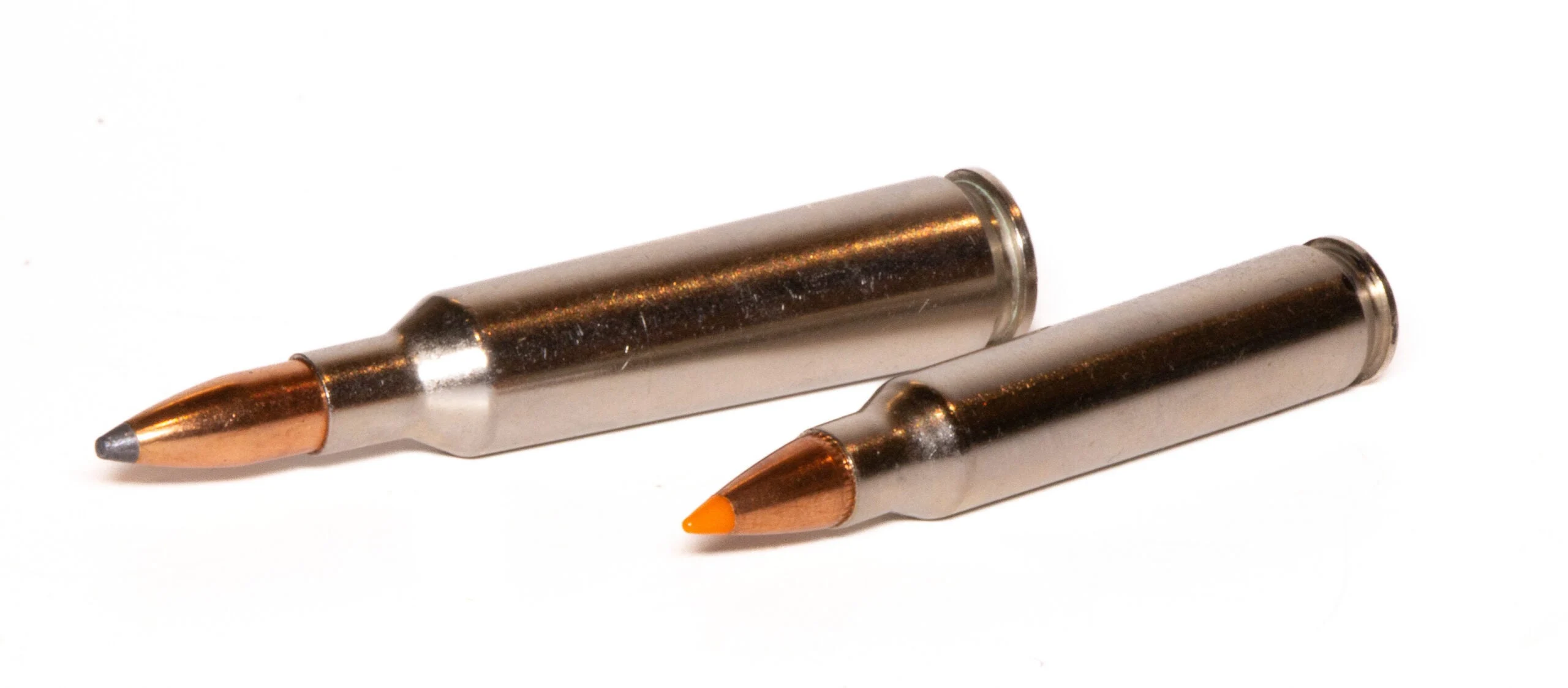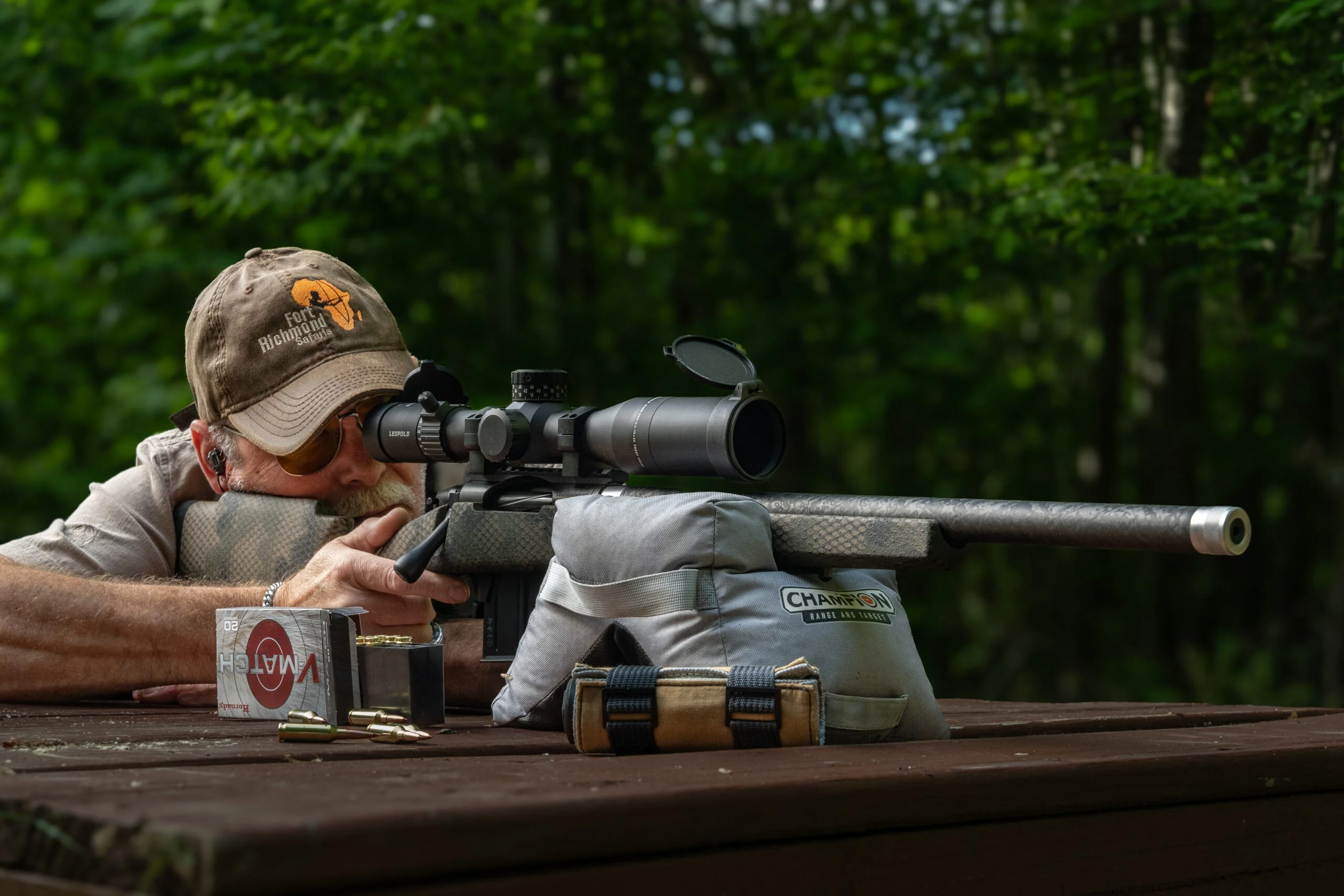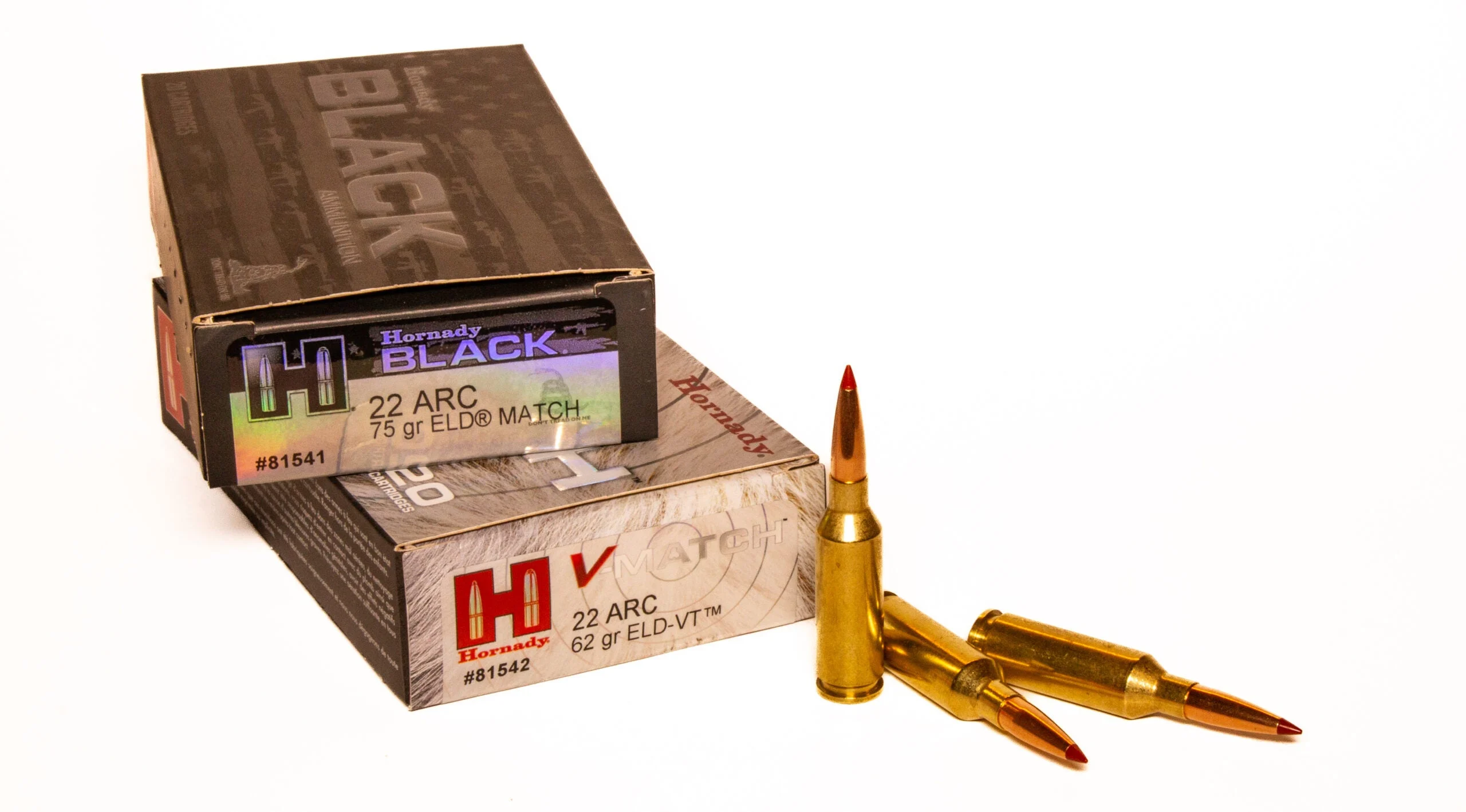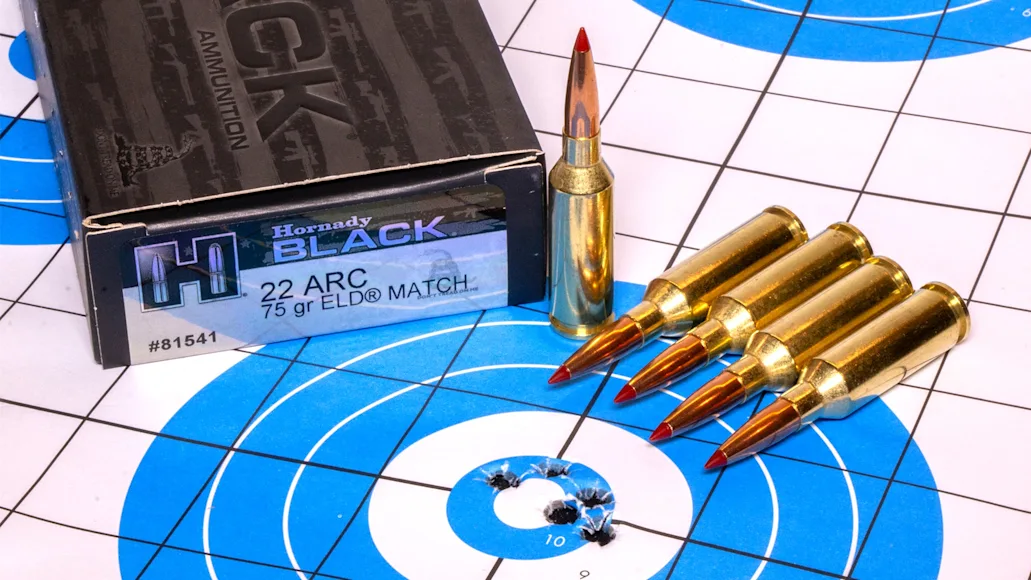We may earn revenue from the products available on this page and participate in affiliate programs. Learn more ›
The 22 Advanced Rifle Cartridge (ARC) is Hornady’s newest cartridge, and it’s getting a lot attention from shooters and hunters wondering if it might be the next big thing. I have my doubts about that, but one thing is for sure: It does offer a level of specific performance never before seen from a 22-caliber centerfire rifle cartridge this compact. The 22 ARC is not as new as it may seem, however. All Hornady really did here was go back in time by about a half century and modernize another cartridge—one many shooters have forgotten about and even more may have never heard of.
None of that takes anything away from the ARC. It is an interesting new cartridge that’s well worth a look for anyone wanting to get a little something extra from a 22 centerfire. And it may indeed be just what you’re after.
History Repeats Itself with the 22 ARC

In the mid 70s, two benchrest shooters by the name of Palmisano and Pindell created a cartridge called the 22 PPC (Palmisano Pindell Cartridge). They also created a 0.243-caliber version of this cartridge called the 6mm PPC. Both cartridges were based on the 220 Russian/7.63×39 cartridge case and became legendary in benchrest shooting circles. However, the Sporting Arms and Ammunition Manufacturers Institute (SAAMI) never accepted/approved either cartridge, and lacking that endorsement, neither gained widespread acceptance. Their forte was precision, hence their popularity in benchrest competition.
Hornady realized if they paired, essentially, the 22 PPC and 6mm PPC cartridges with fast rifling twist rates, they’d emulate the modern rifle cartridge design that’s consistent with their other recent introductions. Also, since neither of the PPC cartridges were SAAMI approved, Hornady saw an opportunity. They standardized the cartridge dimensions and specifications and gained SAAMI acceptance for the 22 and 6mm ARC. This is critical because without it, other manufacturers will not load ammunition or offer rifles for them.
A Family of 22 Centerfire Cartridges

Most of the appeal of the 22 ARC is tethered to the AR15 rifle. With its maximum overall cartridge length of 2.26-inches, the ARC is a perfect match to the detachable magazines used by AR15 rifles. Since around the turn of the century, when the AR15 began finding the modularity we now often take for granted, there’s been a push to develop cartridges that would outperform the 223 Remington, which the AR15 rifle was originally designed to shoot.
But there’s plenty of competition when it comes to 0.224-caliber AR15 cartridges. The somewhat interchangeable 223 Remington and 5.56 NATO are proven, trusted, and together are the most popular rifle cartridge/s in America. The 22 Nosler is kind of a love child between the 223 Remington and 6.8 SPC. Its a 6.5 SPC cartridge case necked down to 0.224-claiber bullet, but its rim diameter is the same as 223 Remington. The 224 Valkyrie is also based on the 6.8 SPC, but its case is shorter than the 22 Nosler’s, which makes it more compatible with longer bullets that have a higher Ballistic Coefficient (BC).
All these cartridges are factory loaded to essentially the same pressure, and the 22 Nosler cartridge case will hold the most gunpowder. This means in most cases, when the same bullet is used, the 22 Nosler will generate the fastest velocities. However, when it comes to ballistics, it’s not just about velocity, especially if you’re shooting at long range. So, let’s look closely to see how the 22 ARC stands out.
Related: 224 Valkyrie vs 223 Remington
How the 22 ARC Stacks Up Ballistically
With external ballistics there are four primary considerations: velocity, energy, trajectory, and wind drift. It can be a bit tricky comparing these four cartridges because different manufacturers load different bullets for each. Also, due to bullet and cartridge case length, some bullets are not compatible with every cartridge. For comparisons sake, we’ll first look at common 55-grain bullets across four 22 centerfire cartridges, and then compare the best performing long-range factory load for each.

As you can see above, when you compare the same bullets in these four cartridges, the 22 ARC lags slightly behind the 224 Valkyrie and the 22 Nosler, but it does outperform the 223 Remington. However, the differences are so small, you’re going to have to be reaching out to around 500 yards to realize any meaningful difference between them.

Where the 22 ARC really shines is at long range. It drops 15% less than the 223 Remington, 11% less than the 22 Nosler, and nearly 7% less than the 22 Valkyrie. With factory ammunition, it’s in the wind drift category where the 22 ARC really shines. In a 10 mph crosswind at 100 yards, the 22 ARC drifts 15% less than the 22 Nosler which is its closest competitor.
Should You Get the 22 ARC in a Gas Gun or Bolt Gun

The AR15 is a gas-impingement driven rifle; it’s not designed to work with high chamber pressures. SAAMI limits AR15 cartridges to a maximum average chamber pressure of 55,000 psi. However, modern bolt-action rifles/cartridges can withstand pressures nearly 20% higher. Manufactures are starting to offer bolt-action rifles chambered for the 22 ARC; I recently tested one from Proof Research. Of course, all factory 22 ARC ammo is loaded to AR15-safe pressure limits, but if you have a 22 ARC bolt gun, you can squeak out a bit more performance.
For example, for the gas-driven AR15, Hornady lists a maximum load for their 55-grain V-Max bullet at 29.8 grains of Accurate 2230 powder with a muzzle velocity of around 3400 fps. However, for a bolt gun, they list a maximum load of 31.5 grains with a muzzle velocity of 3650 fps. Admittedly, you can up the performance of the other AR15 cartridges when using them in a bolt gun. The challenge will be finding trustworthy reloading data.
Is the 22 ARC Right for You in the End?

If ringing steel at 1000 yards with an AR15 is your primary goal, then there is no better cartridge for that than the 22 ARC. At distance, it’s the best performing 0.224-caliber cartridge currently available in an AR15. Of course, if you handload—and a lot of long range shooters do—you could get close to 22 ARC performance with the Valkyrie and maybe even the 22 Nosler. (Where you may run into a problem with the 22 Nosler is with its SAAMI specified 1 in 8 rifling twist rate and longer cartridge case that may not be compatible with the longest high BC bullets.)

On the other hand, if you’re a coyote hunter or maybe even a deer hunter (where its legal with a 22-caliber centerfire rifle), the 22 ARC does not offer a great deal of advantage. This is partly because shots at those critters will be taken at closer ranges, and partly because factory ammunition options for the 22 ARC are extremely limited, at present anyway. For about all other types of shooting, such as prairie dog, recreational, or self-defense, you’ll probably be better off with the original AR15 cartridge—the 223 Remington. This ammo is much more affordable, and the smaller case diameter allows for the maximum magazine capacity in an AR15.
I applaud Hornady for the introduction of the 22 ARC, which essentially standardized the excellent 22 PPC cartridge. It’s a viable cartridge that emulates a modern trend really began about 50 years ago. It has its place, but will never exceed the popularity of the 223 Remington. However, don’t be surprised if it eventually surpasses the 22 Nosler and 224 Valkyrie in popularity.
Read Next: Best 22 LR Rifles, Tested and Reviewed


